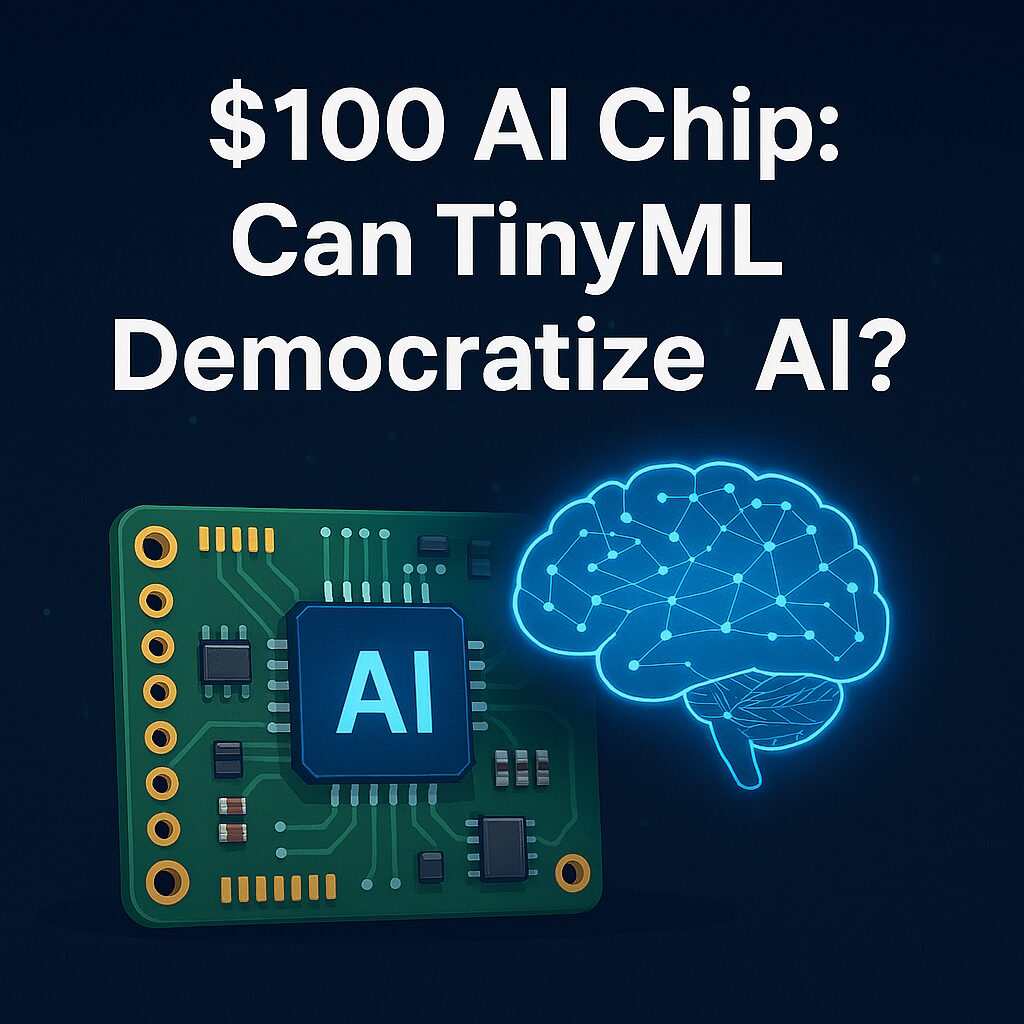Introduction
Artificial Intelligence (AI) is no longer confined to massive data centers or high-end GPUs. Thanks to TinyML—a breakthrough in edge computing—AI is now running on microcontrollers that cost less than $100. This shift is not just technical; it’s philosophical. It’s about democratizing AI, making it accessible to startups, students, and innovators across the globe.
In this article, we explore how the $100 AI chip powered by TinyML is reshaping the future of intelligent systems and leveling the playing field for AI development.
🔍 What Is TinyML?
TinyML (Tiny Machine Learning) is a subfield of machine learning that enables models to run on ultra-low-power microcontrollers and embedded systems. Unlike traditional AI, which relies on cloud computing, TinyML operates locally, offering:
- ⚡ Real-time inference
- 🔒 Enhanced data privacy
- 🔋 Minimal energy consumption
- 🌐 Offline functionality
According to , TinyML is already transforming industries like healthcare, smart homes, and industrial automation.
💡 The Rise of the $100 AI Chip
The emergence of affordable microcontroller units (MCUs) with built-in AI capabilities has made it possible to deploy TinyML at scale. These chips typically include:
| Component | Functionality |
|---|---|
| Processor | Executes ML models locally |
| Flash Memory | Stores program code and model weights |
| RAM | Handles temporary data during inference |
| I/O Ports | Connects to sensors, actuators, and displays |
| ADC & PWM | Converts analog signals and controls power output |
| Communication Modules | Enables Bluetooth, Wi-Fi, or serial communication |
Popular boards like Arduino Nano 33 BLE Sense, Raspberry Pi Pico, and STM32 offer TinyML capabilities under $100.
🌍 Democratizing AI: Why It Matters
The affordability and accessibility of TinyML chips are driving a new wave of innovation:
- 🧑🎓 Education: Students can build AI projects without expensive hardware
- 🚀 Startups: Entrepreneurs can prototype smart devices quickly
- 🌱 Sustainability: Low-power chips reduce environmental impact
- 🌐 Global Inclusion: Developers in emerging markets gain access to AI tools
This democratization is especially vital in regions where cloud infrastructure is limited or costly.
🛠️ Real-World Applications
TinyML is already making waves in:
- 🏥 Healthcare: Wearables that monitor vitals in real time
- 🏠 Smart Homes: Voice and gesture recognition for automation
- 🏭 Industrial IoT: Predictive maintenance and anomaly detection
- 🌾 Agriculture: Soil and crop monitoring using edge sensors
These applications prove that small chips can deliver big intelligence.
⚠️ Challenges Ahead
Despite its promise, TinyML faces hurdles:
- 📉 Limited processing power for complex models
- 🔄 Difficulty in updating models post-deployment
- 🔐 Security concerns on edge devices
- 🧪 Lack of standardized benchmarking tools
However, ongoing research into reformable TinyML—which allows models to evolve after deployment—is addressing these limitations.
📈 SEO Tips for Content Creators
To rank well on Google and engage readers:
✅ Use High-Impact Keywords
- “$100 AI chip”
- “TinyML democratize AI”
- “AI on microcontrollers”
- “Edge AI applications”
✅ Optimize Metadata
- Meta Title: “Can a $100 AI Chip Democratize Machine Learning?”
- Meta Description: “Explore how TinyML is making AI affordable and accessible through low-cost microcontrollers.”
✅ Include Structured Data
- Use tables, bullet points, and headings for readability
- Add alt text to images (e.g., “TinyML chip powering edge AI device”)
Conclusion
The $100 AI chip isn’t just a technological marvel—it’s a symbol of inclusive innovation. By bringing AI to the edge, TinyML is empowering a new generation of developers, thinkers, and creators to build intelligent systems without barriers.

